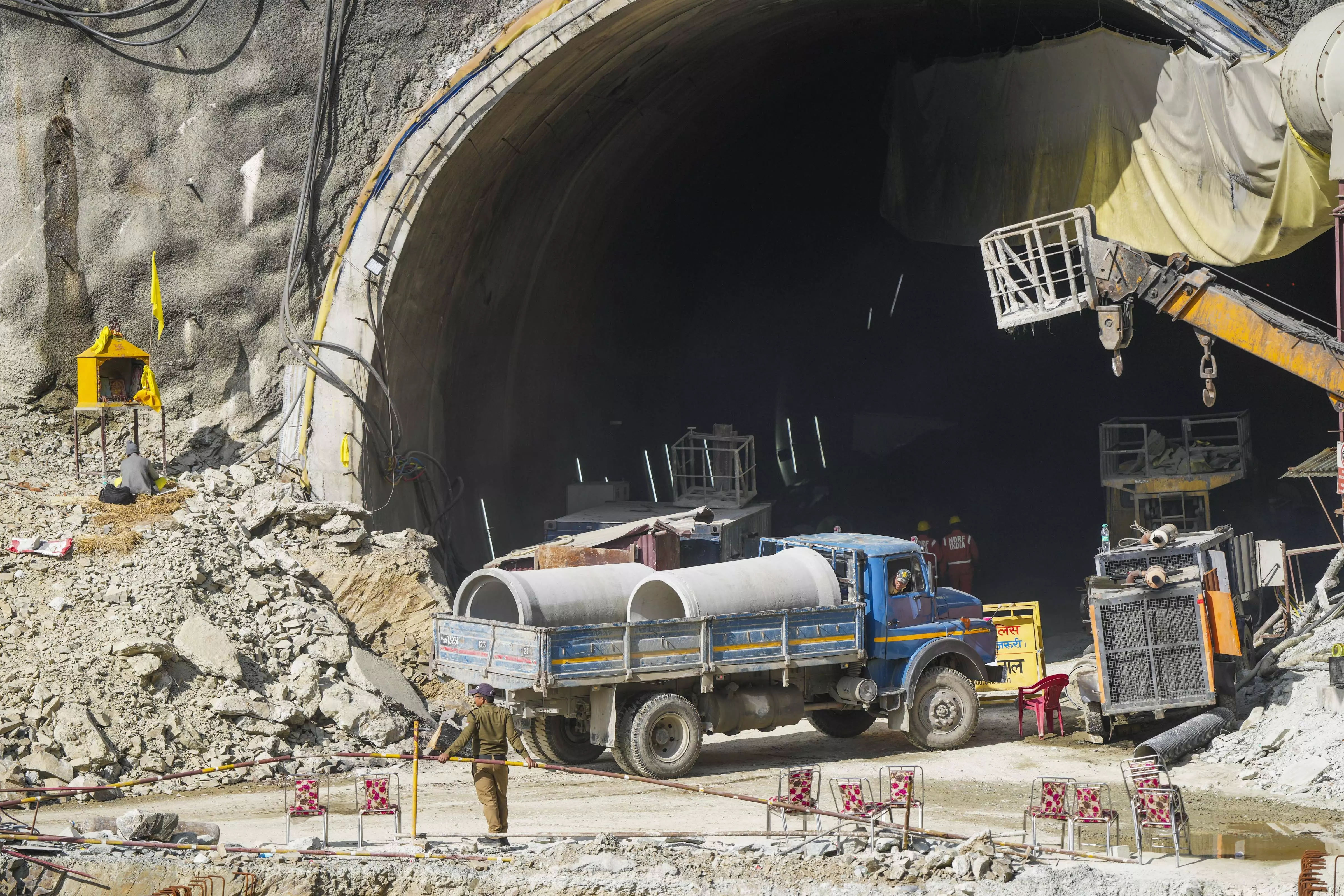
Termed ‘well of death’, rat-hole mining gives new lease of life to trapped workers
Rat-hole mining is mostly done in Meghalaya and Assam to extract coal but the NGT banned this illegal practise in 2014

The rate-hole mining, which has been declared illegal by the National Green Tribunal (NGT), has been put into use to rescue 41 trapped workers who were stuck in a tunnel in Uttarkashi for the last more than two weeks.
After facing numerous challenges with modern machines, the rescuers have come up with the traditional method of rat-hole mining to rescue the workers trapped in the Uttarkashi tunnel. Rat-hole mining, which has been mostly prevalent in Meghalaya and Assam for extracting coal, has now hit the headlines after the experts in rescue operation resorted to it to rescue the 41 trapped workers.
Rat-hole mining is the process of extracting coal and other minerals by digging narrow tunnels deep into the earth and sending down workers using trolleys and ladders to remove the minerals. It is a traditional method of manual drilling, which is mostly done by skilled workers. Narrow pits are dug into the ground, usually just wide enough for one person to fit into.
After digging the pits, the miners drop down into the holes using bamboo ladders and rope to extract coal. It is a hazardous practice because many miners lost their lives in the process.
Tinku Gowala, a rat-hole miner, who was engaged in rat-hole mining in Assam's Margherita-Ledo area said, “The rat-hole mining is a hazardous job because many miners end up losing their lives. Since we have no means of earning we are engaged in this kind of dangerous job. We mostly extract coal through rat hole mining process.”
Rat-hole mining poses a threat to the environment and life of the miners. The mines are typically unregulated, lacking safety measures such as proper ventilation structured support, or safety gear for the workers. “There is no safety for miners who are engaged in rat-hole mining. Every year many people get killed inside the rat-hole mines in Assam and Meghalaya. Rat-hole mining is mostly done in Meghalaya and Assam to extract coal but the NGT banned this illegal practise in 2014. However, the practice is still prevalent,” said Dr Rupak Bhattacharjee, an expert.
At least 12 experts have been called by the company Trenchless Engineering Services Private Limited and Navyuga Engineering Private Limited to do rate-hole mining horizontally in the collapsed part of the main tunnel. Most of them come from New Delhi, Jhansi and other parts of India.
Talking to The Federal, Assam-based senior geologist Pranjal Gogoi said, “These people have the expertise to get into a small pit by using the rat-hole mining technique. After all the modern techniques and machines have failed to rescue the 41 trapped workers, the experts have called up the 12 expert miners for the rescue operation. These people are experts in getting into a small size pit because they have mostly worked in rat-hole mining.”
“Only one person can pass through the narrow rat-hole mine. Now, the experts in Uttarakhand are digging narrow ‘rat holes’ to manually extract the rubble. These rat holes can be dug both vertically and horizontally,” Gogoi said. He also echoed the sentiment that this practice is very dangerous.
In January 2021, six miners were killed after their crane collapsed into a pit in a coal mine in Meghalaya.

